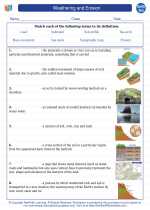Clay: Composition and Properties
Clay is a type of fine-grained natural soil material that contains clay minerals. It is formed through the weathering and erosion of rocks over long periods of time. Clay is composed of very small particles that are less than 0.002 mm in size, making it one of the smallest soil particles.
Composition of Clay
Clay minerals are hydrous aluminum phyllosilicates, which means they contain water and are made up of aluminum, silicon, and oxygen atoms arranged in a crystalline structure. The most common clay minerals include kaolinite, montmorillonite, and illite.
Properties of Clay
Clay has several unique properties that make it important in various fields:
- Plasticity: Clay has the ability to be molded and shaped when moist, making it an ideal material for pottery and ceramics.
- Cohesiveness: Clay particles have a strong attraction to each other, giving clay its cohesive properties.
- Adhesiveness: Clay has the ability to stick to other materials, making it useful in construction and as a binding agent in soil.
- Permeability: Clay has low permeability, which means it has a tendency to hold water and can act as a barrier to water flow.
Study Guide
Key Concepts
1. What are the primary minerals found in clay?
2. Discuss the process of clay formation through weathering and erosion.
3. Explain the unique properties of clay and their significance in various applications.
4. Compare the plasticity and permeability of clay with other soil types.
Real-World Applications
1. How is clay used in the production of ceramics and pottery?
2. Discuss the role of clay in construction materials such as bricks and tiles.
3. Explain the importance of clay in agriculture and soil management.
4. Explore how clay is used in the cosmetics and pharmaceutical industries.
By understanding the composition and properties of clay, we can appreciate its significance in various fields and its impact on the environment and human activities.
[Clay] Related Worksheets and Study Guides:
.◂Earth Science Worksheets and Study Guides High School. Weathering and Erosion
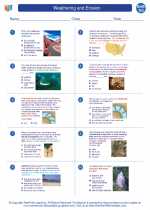
 Worksheet/Answer key
Worksheet/Answer key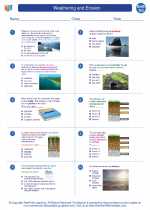
 Worksheet/Answer key
Worksheet/Answer key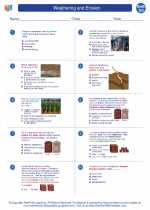
 Vocabulary/Answer key
Vocabulary/Answer key
 Vocabulary/Answer key
Vocabulary/Answer key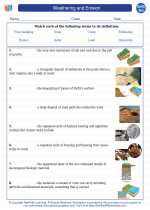
 Vocabulary/Answer key
Vocabulary/Answer key